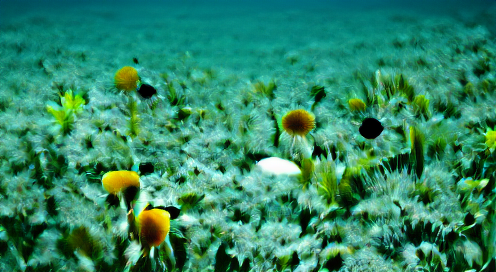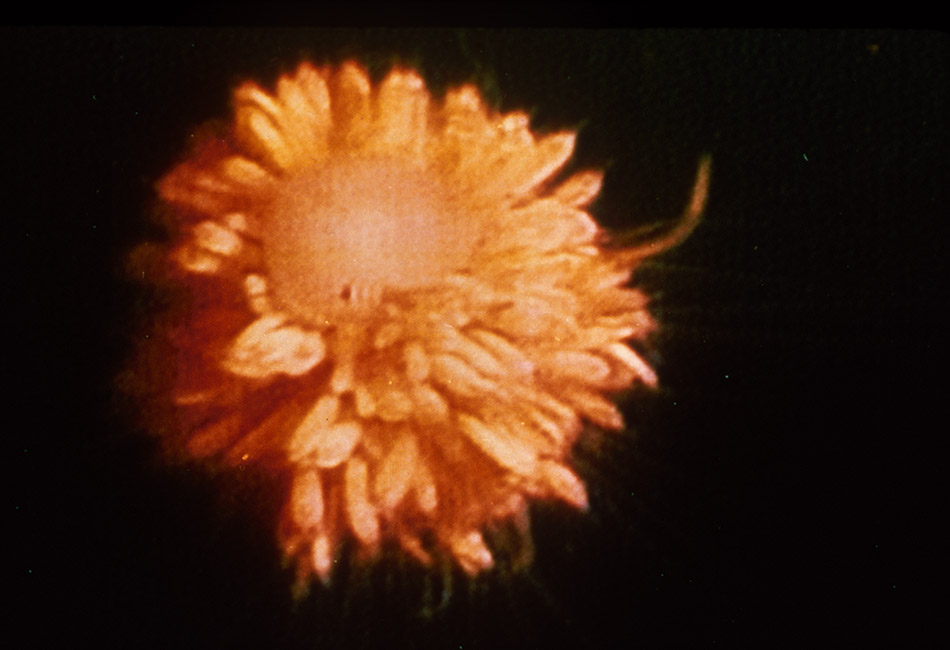
Pando is a Latin term meaning “to spread out” and fittingly it names the heaviest, and possibly oldest, organism that is still alive today: a ‘forrest’ of quaking aspen. Pano has a single shared root system spanning over five miles of which all the trees live out their cycle of birth and death from this single root system. These clonal colonies of organisms are surprisingly abundant and there are many examples in nature. These organisms are perplexing. They are composed of ‘clones’ of small sub-organisms which are interconnected via a communication network. Sometimes the superstructure consists of a variety of organisms with specialised capabilities. For example, the well known Portuguese man o’ war (Physalia physalis) is a conglomeration of three types of organism units: an organism for defence, an organism for feeding, and an organism for reproduction. These three organisms are so helplessly interdependent that, although they can exist without one another when found in different species, in their current form they rely on everyone’s coordination and participation to survive.
Because these organisms are a distributed system with no central control, constant communication is necessary. The individual units of the colony are refered to as zooids, which posses polymorphic properties. One type of zooid might be collect some tasty morsels which it then has to share with the other zooids in the colony to keep everyone alive and functioning. Likewise, a zooid which has a venemous sting might be able to defend itself from predators, but without also defending its neighbours which supply it food, it will still die of starvation. This creatures bizzare existence raises some foundational questions. By studying these earlier creatures - hypothesised to have evolved about 1.5 billion years ago, prior to the multicellular organisms which evolved about 600 million years ago - we can discover clues to questions on the origin of intelligent behaviour. Firstly, how did such unnatural cooperation begin? Although a stretch, it is within the grasps of evolutionary theory to argue that some organsims such as ants can learn to work together in groups, even though it is still debated how this could evolve. But how did the colonial organism develop: one organism evolving to grow and reproduce other organisms and devise a connective structure in which they all closely bind? Imagine two unicellular organisms floating in the Blue Void. Organism A finds itself with flagella which allow it to propel itself in various directions. Organism B is less mobile, but is accompanied with an extremely poisonous surface that makes it distasteful to fish. By some unintentional consequence, A gets a flagella snagged onto B and the two cannot break loose. As A continues flagella-ing through the merciless ocean, it travels distances no other A has gone before. The once vicious creatures which sucked up A and consumed it in seconds now cower in fear of its new poisonous company. But soom this marriage ends fatally. A is unaccustomed to this additional weight and cannot orientate to properly consume food particles. B was never happy: after being ‘captured’ by A it found itself being unwillingly dragged along at high velocity, unable to diffuse the appropriate molecules through its membrane to maintain internal stability. Soon both die intertwined in the other’s orthogonal lifestyle. A deadly collapse of yin and yang. But elsewhere in the massive ocean, this coupling of A’s and B’s is a reoccurring phenomena. One particular coupling is quite lucky, A’s waste channel connected directly on top of B’s feeding channel and coincidentally B’s food source is A’s waste. This new bi-organism finds itself in a rather priveleged world: safe from predators and well-fed for both parties…

Maybe this is how the first colonies began? Collaborating organisms, through mere chance, finding themselves able to accomplish more than the sum of their parts. Of course, for this random interaction to also produce organisms which can reproduce offspring with the same colonial structures is beyond me. But somehow a complex system developed in which hundreds of zooids all communicated in a very intricate and complicated network, floating in pure homeostasis. Communication networks are found in every complex organism and complex structure on Earth. For the sake of argument, let me list a tiny sample merely to stress the point: a slime mould searching for food, trees absorbing nutrients through their roots, thought patterns in the human brain, a Siphonophore feeding its colony, the circulatory system that feeds your cells, the delivery of sediment through the branches of a river, the nervous system of a jellyfish, the underground warren of an ant colony, and the internet. When it comes to developing artificial life and the artificial intelligence to accompany it, deeply studying these naturally emerging network systems could provide key insight. The foundation of multi-organism and multi-cellular communication sparked the age of complex organisms that eventually culminated in the development of tools such as conciousness and high-level reasoning. Of course it is unclear when these powerful processes developed, but communicatoin between smaller units in a bottom-up fashion was foundational to their evolution.
If we were to discover complex life on other planets what would we find? Assuming the life is in a form that we can perceive (e.g. it is not some gaseous existence spread across the span of a nebula), I would argue that the life we find would contain some form of internal communication structure. Orders of life are the assembly of simpler parts into more complex pieces of which are assembled into more curious complexities, ad infinitum. Distributed communication between the pieces is crucial for the structure to be maintained and work together as a whole. Therefore, an important part to understanding why life developed in the first place could be in understanding why small units, whether they are organisms, proteins, or individual molecules, choose to stay together and cooperate rather than mindlessly and adversarially destroy one another.
The second image in this post is that of an Ocean Dandelion. Do not let the name deceive you. This Siphonophore is a conglomeration of small Zooid organisms, sharing a single tissue. They work in harmony to maneuver their deep sea spaceship and gather food to help the entire colony survive. The organism is created by cloning a single Zooid over and over.
–
The graphic at the top of this post: “Pando And An Ocean Dandelion In A Dark Ocean” via VQGAN+CLIP.